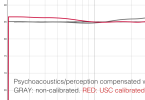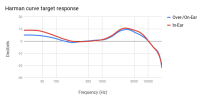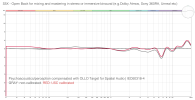I’m very interested in the Ollo S5X for reasons that are a little off the beaten track, at least for this forum; I’m heavily into surround. Right now, my studio is running 7.1, and I’m in the process of adding an Emotiva six-channel amp and six height speakers for Atmos 7.1.6.
I use a pair of Neumann NDH30s for most of my initial tracking, and I love them. But one of the S5X’s
raisons d'être is to resolve spatial information (as they say on their site, “binaural effects and down mix”) when mixing multichannel immersive audio.
I’m absolutely sold on and vested in what I think of as
real surround … multiple speakers in a live room. But let’s face it … outside of a theater, the way most people will experience something like Apple’s version of Atmos spatial audio will be with a set of headphones. And while I’ll continue to base my mixes on “speakers in the room,” the idea of using the S5Xs to tweak the binaural experience really appeals to me.
For anyone interested in exploring Dolby Atmos
without investing in a dedicated multichannel speaker system, check out Fiedler Audio’s free version of their Dolby Atmos Composer software,
Dolby Atmos Composer Essential. It will let you create binaural Atmos mixes with your headphones, no matter which DAW you’re using. It will also clarify why I think the S5Xs could be a genuine boon for the binaural versions of my surround mixes.
(Sorry – I know this is off-topic for an AXE–FX III discussion, but since this thread was here, it seemed appropriate.)




